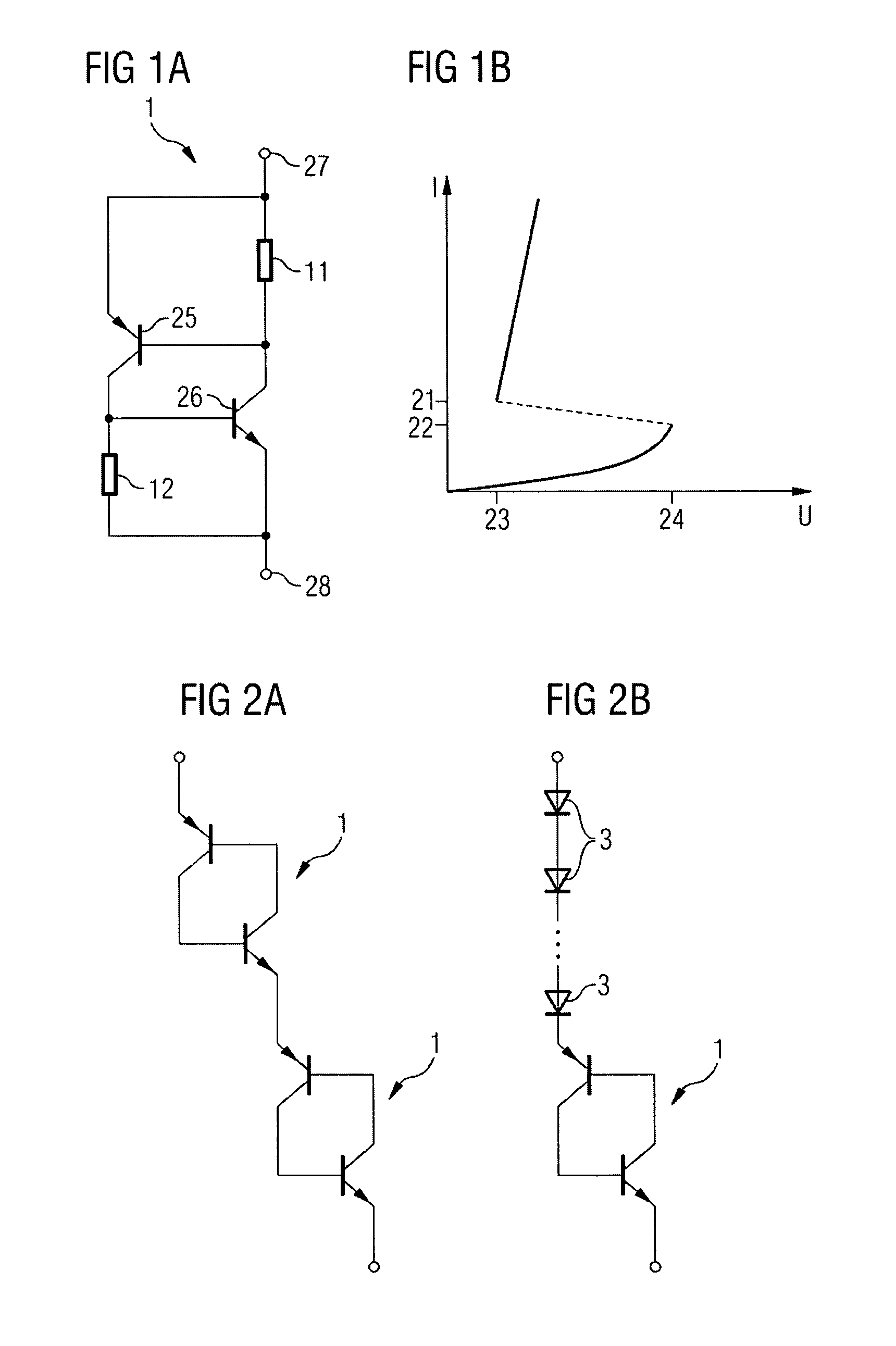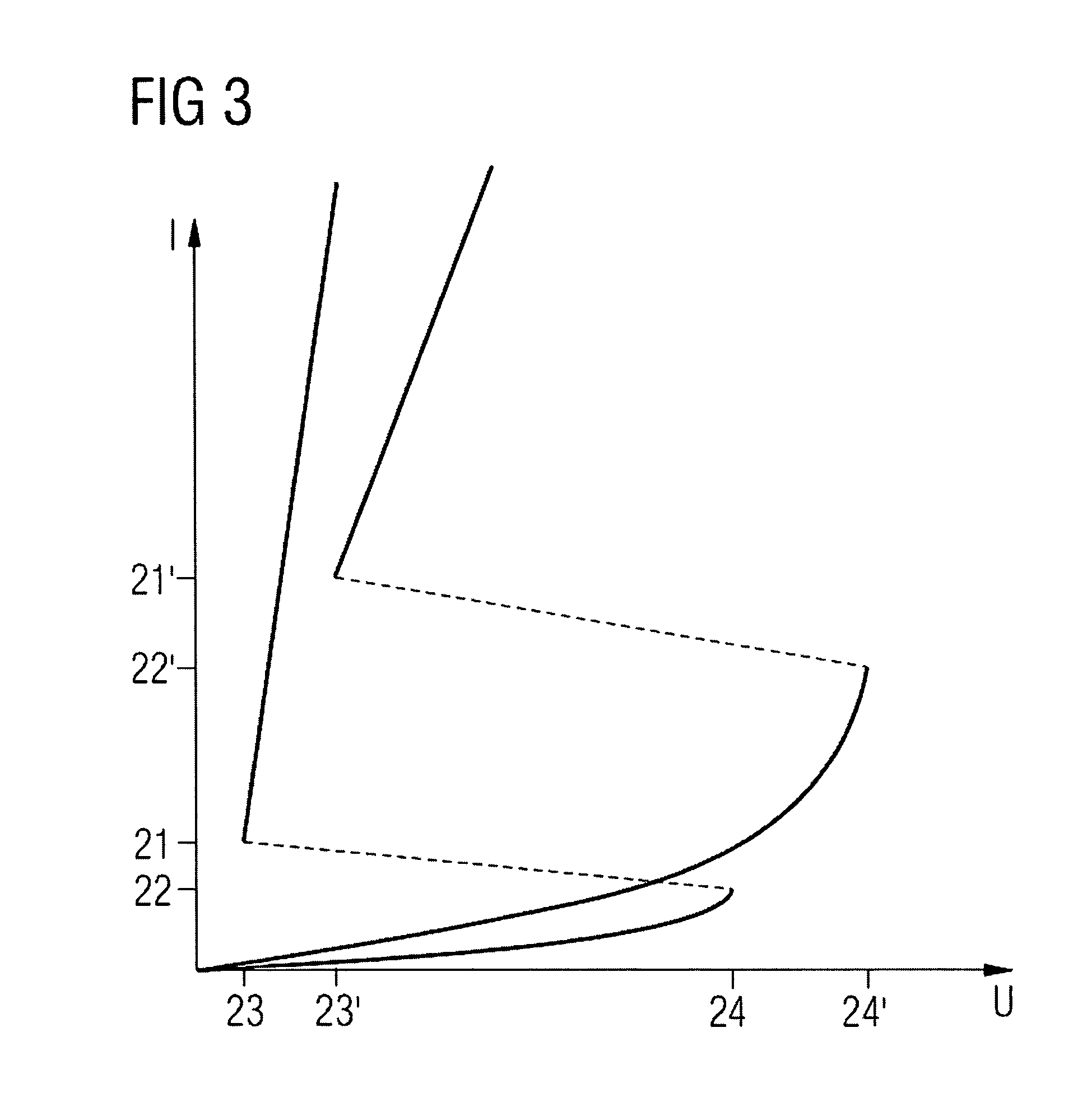Electrostatic discharge protection
a technology of electrostatic discharge and protection, applied in the direction of semiconductor devices, semiconductor/solid-state device details, electrical apparatus, etc., can solve the problems of higher resistance, circuit to be protected is damaged before the thyristor and the resistance of the thyristor is reduced. , the effect of avoiding latching
- Summary
- Abstract
- Description
- Claims
- Application Information
AI Technical Summary
Benefits of technology
Problems solved by technology
Method used
Image
Examples
Embodiment Construction
[0045]FIG. 4a represents an ESD protection device 19 that diverts an electrostatic discharge between a first terminal 27 and a second terminal 28 of the ESD protection device 19, the potential of the first terminal 27 being higher than the potential of the second terminal 28 (for instance, the first terminal 27 can be connected to VDD and the second terminal 28 to VSS). The first terminal 27 is connected to the emitter of a PNP transistor 25, and via an NMOS transistor 4 and an n-well resistor 11 to the base of the PNP transistor 25 and the collector of an NPN transistor 26. The collector of the PNP transistor 25 is connected to the base of the NPN transistor 26, to an ESD signal 6 and via a p-well resistor 12 to the second terminal 28. The emitter of the NPN transistor 26 is also connected to the second terminal 28. The ESD signal 6 that is inverted via an inverter 8 controls the NMOS transistor 4. A contact point 13 in front of the base of the PNP transistor 25 is called the n-wel...
PUM
 Login to View More
Login to View More Abstract
Description
Claims
Application Information
 Login to View More
Login to View More - R&D
- Intellectual Property
- Life Sciences
- Materials
- Tech Scout
- Unparalleled Data Quality
- Higher Quality Content
- 60% Fewer Hallucinations
Browse by: Latest US Patents, China's latest patents, Technical Efficacy Thesaurus, Application Domain, Technology Topic, Popular Technical Reports.
© 2025 PatSnap. All rights reserved.Legal|Privacy policy|Modern Slavery Act Transparency Statement|Sitemap|About US| Contact US: help@patsnap.com



